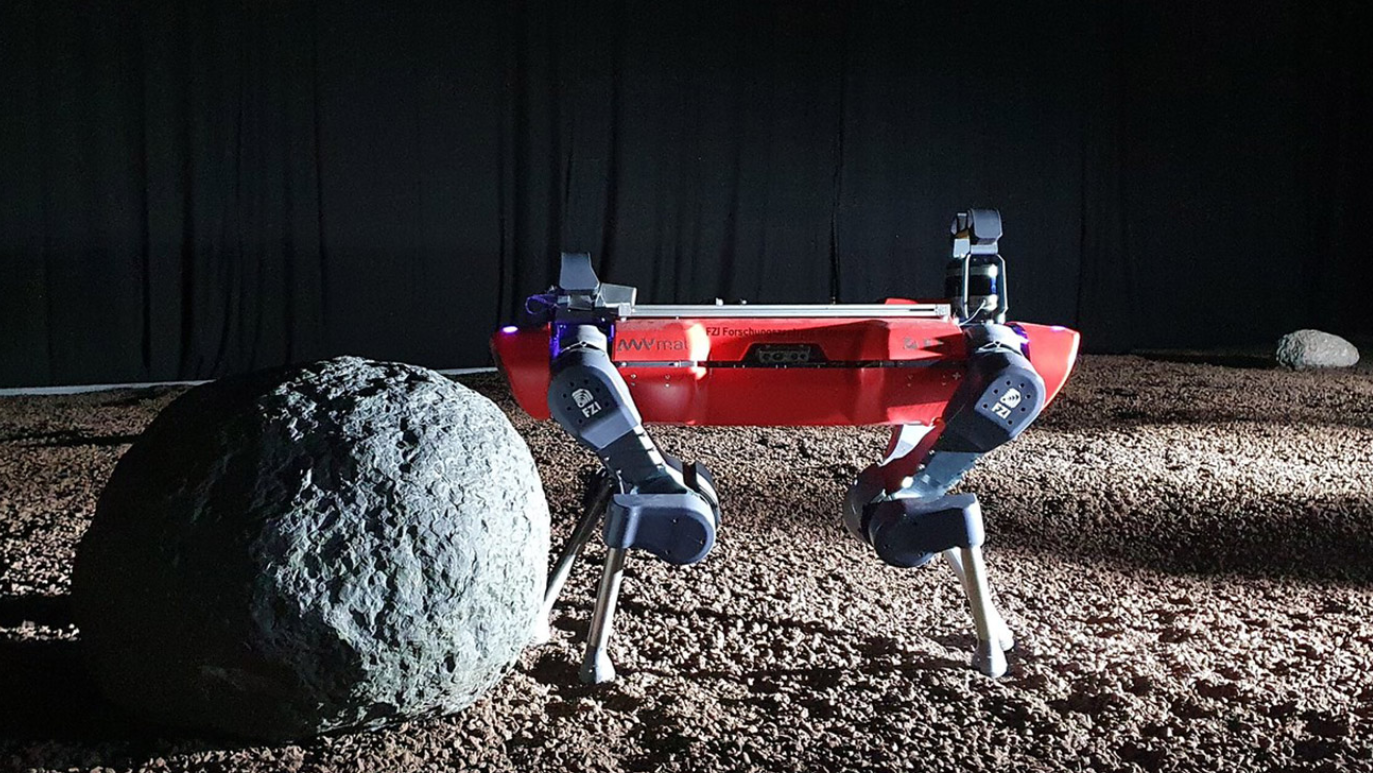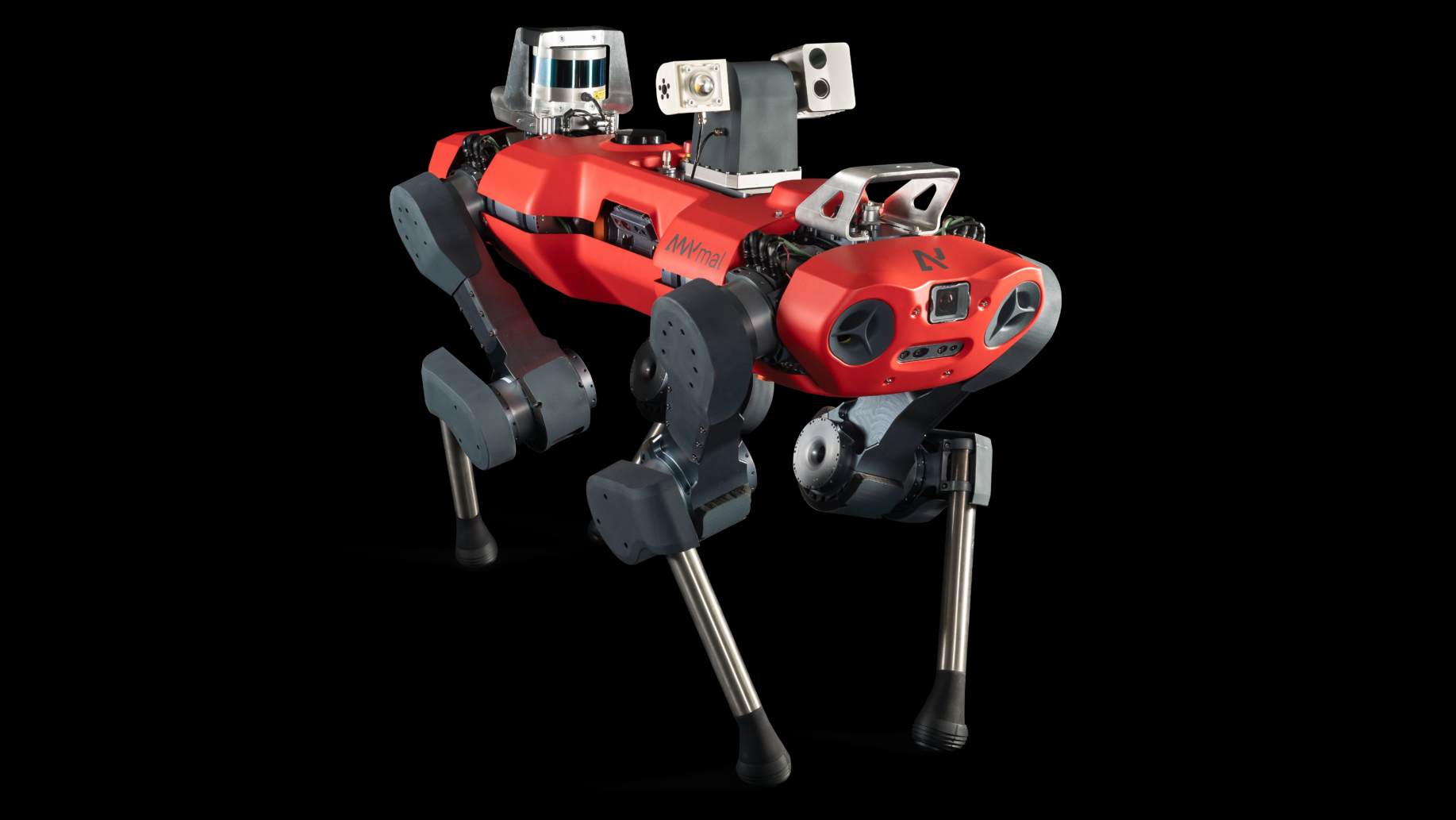Moon's best friend: Robot dogs could be future lunar explorers
Imagine fetching in the moon's gravity, a sixth of that on Earth's.

Future lunar explorers may not only be barking at the moon, but digging for scientific answers.
Dog-shaped robots may be used on future moon missions, as humanity's best friend is an agile explorer already. Leaping, digging and exploring elevated terrain are all things dogs eagerly do on Earth.
Now, researchers hope to replicate that agility on the moon for the NASA-led Artemis program that could land astronauts later in the 2020s.
The robot dog concept is called LEAP, or Legged Exploration of the Aristarchus Plateau; Aristarchus is one of the moon's regions that the European Space Agency or ESA (which is funding the project) hopes to explore before too long.
Video: Watch a NASA moon rover complete a lunar obstacle course
"With the robot, we can investigate key features to study the geologic history and evolution of the moon, like the ejecta around craters, fresh impact sites, and collapsed lava tubes, where material may not have been altered by space weathering and other processes," Patrick Bambach, an engineer at the Max Planck Institute for Solar System Research in Germany, said in a statement.
The dog-like robot may ride on the surface of ESA's European Large Logistics Lander (EL3), which is tasked to send payloads and experiments to the moon's surface starting in the late 2020s. The dog shape is based on a legged robot called ANYmal that was developed at ETH Zürich and its spinoff ANYbotics.
Get the Space.com Newsletter
Breaking space news, the latest updates on rocket launches, skywatching events and more!
Between ANYmal's varied gaits, ability to flip back up if it falls and its agility at climbing steep slopes, this is lunar exploring as we've never envisioned it. ANYmal can even dig channels in the soil or use its legs to flip rocks over to see what's underneath.
Related: Meet Au-Spot, the AI robot dog that's training to explore caves on Mars

"Traditional rovers have enabled great discoveries on the moon and Mars, but have limitations," Bambach said. "Exploring terrain with loose soil, large boulders or slopes over 15 degrees are particularly challenging with wheels. For example, the Mars rover, Spirit, had its mission terminated when it got stuck in sand."
The research is still early-stage, but so far, the team has deployed the robot in a virtual environment meant to simulate a moon-like surface, along with gravity and just properties. The dog was also taken, naturally, for a walk outdoors.
Researchers were surprised at just how smart the robot has been in its early tests. On the moon-like surface, where gravity is just one-sixth that of Earth, "ANYmal started to use a jumping-like mode of locomotion, just as the Apollo astronauts did — realizing that jumping can be more energy efficient than walking," said Bambach.
When complete, the team hopes the robot dog will be less than 110 pounds (50 kg) in mass, with one-fifth of that being scientific payloads. AnyMAL will be asked to carry anything from multispectral sensors, radar to see beneath the ground, to spectrometers to assess the composition of rocks nearby. The first flight date has not yet been announced.
Follow Elizabeth Howell on Twitter @howellspace. Follow us on Twitter @Spacedotcom or Facebook.
Join our Space Forums to keep talking space on the latest missions, night sky and more! And if you have a news tip, correction or comment, let us know at: community@space.com.

Elizabeth Howell (she/her), Ph.D., was a staff writer in the spaceflight channel between 2022 and 2024 specializing in Canadian space news. She was contributing writer for Space.com for 10 years from 2012 to 2024. Elizabeth's reporting includes multiple exclusives with the White House, leading world coverage about a lost-and-found space tomato on the International Space Station, witnessing five human spaceflight launches on two continents, flying parabolic, working inside a spacesuit, and participating in a simulated Mars mission. Her latest book, "Why Am I Taller?" (ECW Press, 2022) is co-written with astronaut Dave Williams.









